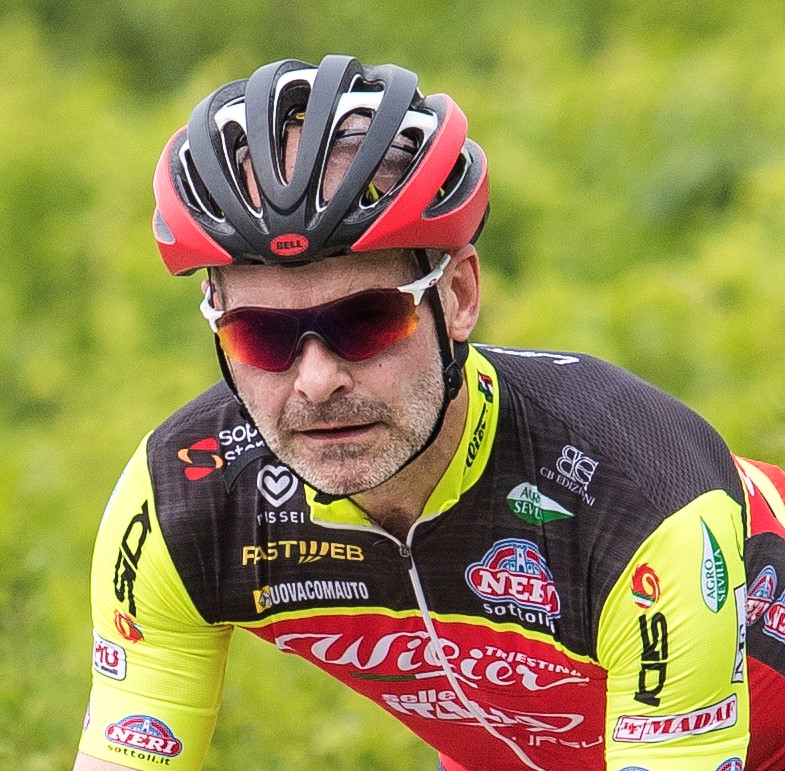SQUIRREL_13330850
The Exposure Sirius Mk10 Daybright front light is designed for road use and sits alongside the brand’s extensive off-road range.
Despite Exposure billing it as a ‘to be seen’ light, there’s excellent output and a good beam pattern for riding on unlit roads.
Ultimately, it’s a very well-made light for its output, albeit expensive at £95 / $105 / €95.
Exposure Sirius Mk10 Daybright specifications and details

The Sirius sits towards the middle of Exposure’s road lights range. It’s a bit more substantial than the Trace and Boost, but far less beefy than the Strada.
While the Trace and Boost (and their rear counterparts) can now be charged via USB-C, Exposure continues to use its SmartPort round plug on the Sirius (and the Strada).

The charging cable is supplied with the light, but it’s yet another cable to keep tabs on. Exposure quotes a seven-hour recharge time.
The Sirius is IP67 ingress rated, so it should cope with dust storms and 30 minutes of riding in a one-metre-deep river.
Exposure Sirius Mk10 Daybright performance

The fact that the Sirius is now at Mark 10 indicates the basic stick-shaped design’s longevity. Exposure describes the Sirius as "the ultimate to-be-seen front light", but the 900-lumen peak output now on offer places it squarely in the ‘to-see’ category.
The CNC-machined body with a finely milled surface and larger cooling grooves at the front and rear have Exposure’s classy, durable feel.
A translucent rear window includes the power button and two LED charge-level indicators. The charge port sits under a bung, in a design common to Exposure’s higher-powered road and mountain bike lights.
I’ve always found Exposure’s bung awkward to seat, although it provides a good level of ingress protection.

In the peak setting, there’s the longest forward throw of the six lights I tested together, with a beam pattern that tapers off quite steeply to the sides but still provides plenty of peripheral illumination.
Exposure hasn’t abandoned city riders, though, with the lens offering large side windows.
There’s a shield over the top of the lens, but I needed to make sure it was oriented correctly to avoid dazzling myself.
A single press of the rear button cycles the light through three constant modes, so you shouldn’t get thrown into darkness when trying to increase or lower light levels. A slightly longer press activates the day flash mode.
There’s more to it than that, though – there are seven programmes, each with two or three intensity levels.

The modes and their runtimes are etched in tiny letters on the side of the Sirius’s body.
However, you’ll need to spend some time working out what they all do and how to select them by counting the flashes when in programming mode.
It’s straightforward once you get your head around it, albeit there’s a learning curve. If nothing else, it’s an enduring quirk of many Exposure lights.
The light gives you plenty of warning when it’s running low, with the LEDs turning from green to red, then flashing red.

The lamp itself gives two quick flashes intermittently once the battery is running low, just in case you’ve ignored the angrily flashing red LEDs.
I got over two hours' runtime in peak output before the light output dropped, although I suspect the light might have heat-throttled, extending the runtime.
It was the first of the six lights in my group test to give out completely, although that was only after 2hrs 30mins in the peak output setting, and with abundant warning to switch to a lower setting.
The Sirius is supplied with Exposure’s basic clip-in handlebar mount, which attaches to the bike with a rubber strap.

It’s secure enough that the light doesn’t jiggle up and down, even if pushed as far forward in the mount as it will go.
This is handy because I found that mounting the light mid-way along its body could result in it rubbing against my thigh when out of the saddle.
The Sirius would be a good candidate for mounting under an out-front mount or on a helmet, although the necessary mounts are not included and they’re fairly expensive at £10 for the GoPro and £22 for the helmet mount. These mounts are tried-and-tested, though.
The light costs a premium too, being around 50 per cent more expensive than the five other lights on test with a compatible output.
How I tested – front lights
I tested the six lights mainly on dark roads, where I could get a good idea of their light throw and illumination pattern in different modes, how easy it was to switch between modes and whether I was plunged into darkness or low-output flashing modes when cycling through them.
I also performed a burn-down test, fully charging the lights, then noting how long each ran for at its highest output, and how gracefully it powered down once the battery level reduced.
Other aspects assessed included ease of mounting to the bike and removal, different mounting options and the usual weights and other stats.
Lights on test
- Exposure Sirius Mk10 Daybright
- Magicshine Hori 900
- NiteRider Lumina Micro 950
- Lezyne Micro Drive 800+
- Moon Titan Mini
- Oxford Ultratorch CL1000
Exposure Sirius Mk10 Daybright bottom line

The Exposure Sirius provides great illumination for faster riding on unlit roads, taking it beyond the ‘to be seen’ category.
It’s compact, lightweight and built superbly, helping to justify the premium pricing for a light with its high output.
It’s a good option to use as a daytime light in flashing mode, too. Just don’t lose the uncommon charging cable.
SQUIRREL_13330850
Product
| Brand | Exposure |
| Price | €95.00, £95.00, $105.00 |
| Weight | 86g |
Features
| Light type | front |
| Integrated battery | yes |
| Features | Claimed run time (full beam): 1:30 hours IP rating: IP67 Battery capacity: 3500mAh Modes: 7 |
| Output (lumens) | 950 |





